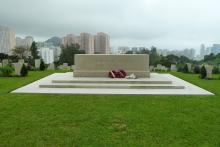C) Precautionary Measures
Primary tabs
Precautionary Measures
Public expenditure had also greatly increased. Air raid tunnels – thought incapable of sheltering more than a tithe of the teeming population – had been constructed at a cost of $8,000,000. Further large expenditure built up a food and fuel reserve, large enough to furnish a siege ration for 150 days for two million people. More than $1,000,000 was needed to build decentralised stores (58 in number) for this vast quantity of food. Government borrowed $20,000,000 and took over the rice import trade.
Local dockyards were working 24 hours a day for the British Government; small Chinese factories were being encouraged to adapt themselves to production of simpler requirements of the Forces, and had from thirty to fifty million dollars worth of orders in hand.
Compulsory service for the white population had been introduced; those of military age were drilling; those exempt were detailed for various essential services, and were practised against Der Tag.
Despite all this activity, however, the prevailing local opinion was that Japan would not be so foolish as to enter the war, but would content herself, as last time, with making profits and extending her mercantile marine.
In the week before the war, delegates from British Malays, the Dutch East Indies, Shanghai and Hong Kong assembled in Hong Kong to discuss more effective movement of Far Eastern shipping – vessels which in a few days‘ time were not to move at all, unless luckily taken out of harm’s way – as many were, on receipt of an early warning from the Naval authorities.

